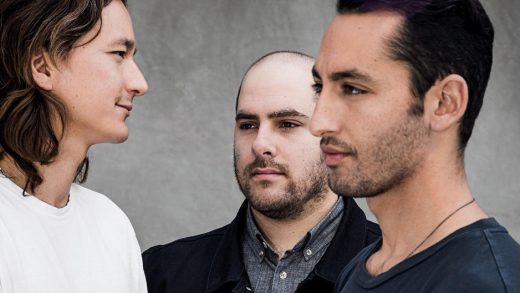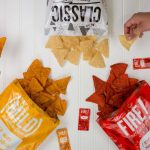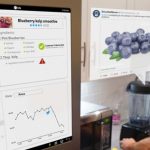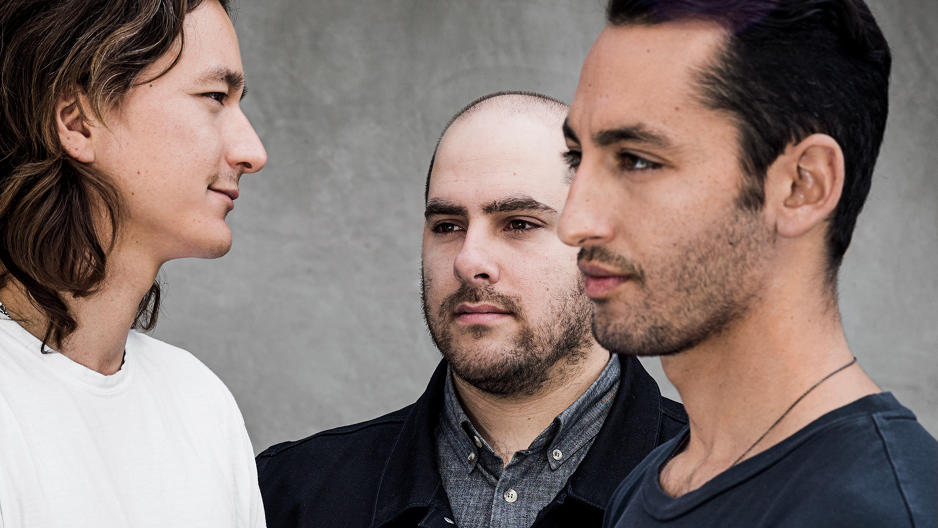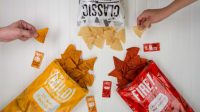The Founders Of Sweetgreen Are Building A Farm-To-Counter Empire, One Bowl At A Time
McDonald’s founder Ray Kroc once said of his restaurants, “We’re not in the hamburger business, we’re in show business.” That is perhaps the one thing he and the millennial founders of the fast-growing locavore salad chain Sweetgreen might agree on.
If you’ve never visited a Sweetgreen, picture a farm stand designed by Steve Jobs—with white walls and colorful, fresh vegetables waiting to be chopped. The stores’ open kitchens (a design trope shared by Chipotle, another fast-casual pioneer) showcase how much scratch cooking happens onsite. Salad dressings are made in-house daily. So is the falafel, which is prepared from dry chickpeas soaked overnight on the premises. (This is basically unheard of in this category; even some high-end restaurants use canned chickpeas.) The nine-year-old company also stages the Sweetlife food and music festival in Columbia, Maryland, each spring, with acts such as the Strokes and Solange. After Kendrick Lamar headlined the event in 2015, the restaurant chain collaborated with him on the “Beets Don’t Kale My Vibe” salad, a nod to one of his songs.

But working in show business means that the audience always comes first, which can get tricky. When Sweetgreen removed sriracha from the menu last spring—the high-in-sugar condiment didn’t jibe with its healthy, made-in-house approach—fans unleashed on Twitter. (Sample tweet: “I’ve survived cancer and @sweetgreen getting rid of their Sriracha is actually worse.”) The same thing happened when a midwinter thaw decimated peach crops on the East Coast, forcing berries to stand in for the popular peach-and-goat-cheese salad at some locations. “At our corporate retreat,” says cofounder Nathaniel Ru, with a wry smile, “we did a version of Mean Tweets.”
More than a decade after they met as undergrads at Washington, D.C.’s Georgetown University, Nicolas Jammet, Jonathan Neman, and Ru—Sweetgreen’s co-CEOs and cofounders—have become adept at standing their ground. But as the trio embarks on an ambitious plan to double in size over the next 12 months, bringing their total restaurant count to roughly 100 stores across eight cities, they will be tested even further. In the past year, they’ve moved their headquarters from D.C. to Los Angeles and opened their first Midwestern outpost, in Chicago. They’re now pressing forward in their mission to become a national fast-food salad chain—”the Starbucks of salads,” according to Ru—while maintaining an unwavering commitment to their original, farm-to-counter ethos. That means finding a way to scale a business that’s inherently local: Each restaurant proudly displays the names of its suppliers right on the menu—a rarity at this roughly $10-a-salad price point. And unlike at Chipotle, dishes can vary wildly from location to location, depending on what’s in season regionally. Sweetgreen won’t disclose its numbers, but in 2015 suggested that it would hit at least $75 million in revenue by the end of that year, when it had 39 stores.
“The greater point about getting to 100 stores is proving the economic model works,” Jammet says. “Proving we can source this kind of food at scale. Proving we can build an economic model that doesn’t rely on soda [sales] but on small- and medium-size farmers.” To get there will require changing a lot more than hot sauce.
Sweetgreen’s origin story sounds like a sitcom premise: Three college buddies, armed with an entrepreneurial spirit inherited from their immigrant parents, identified a hole in the healthy-lunch market and raised $350,000 from friends and family to open a restaurant three months after graduation. “We like to say it was Kickstarter before there was Kickstarter,” Neman says.
Video: Dynamic Dialogues With Nathaniel Ru
The original Sweetgreen outpost, which opened in D.C.’s Georgetown neighborhood in 2007, was pretty makeshift. To calculate how many salads they could expect to sell during lunchtime, the three would-be restaurateurs simply camped out at a busy Subway sandwich shop and counted customers. But Sweetgreen quickly became a venture-capital darling, attracting food luminaries such as Shake Shack’s Danny Meyer and Momofuku’s David Chang, along with VCs such as Steve Case. It helped that Jammet, whose parents ran the legendary New York restaurant La Caravelle until it closed in 2004, had interned for Joe Bastianich (Mario Batali’s business partner), a family friend who became an early investor.
In 2013, Case’s Revolution Growth led a $22 million funding round, and helped the company raise another $18.5 million a year later. A fourth round of funding in late 2016 brought Sweetgreen’s outside in-vestment to around $115 million. As Case explains: “Food is a $5 trillion industry, and one of the key trends is going to be away from more processed Big Food. We’re betting on ideas, but we’re [also] betting on people who execute those ideas.”
Jammet, Neman, and Ru are attempting something that’s effectively never been done before. Sweetgreen currently works with more than 250 farms nationwide. But to feed customers at 100 restaurants it needs to recruit additional growers willing to raise their crops ethically and sustainably (translation: at a greater cost). Investor David Barber, of New York’s landmark farm-to-table restaurant Blue Hill at Stone Barns, explains that farmers want to know “who will be around in year two or three to support the investment [farmers have made] to service that need?”
Building a strong network of suppliers—and helping them expand in tandem with the restaurant chain—is bolder than it sounds. Sweetgreen rival Tender Greens, for example, works with local growers, but all of its 21 stores are in California: one coast, one supply chain. Eighteen months before opening in Chicago, Sweetgreen’s supply team—now headed by Kevin Quandt, recruited from Blue Apron—was on the ground, meeting with area farmers like the father-daughter team behind Growing Power, who now provide kale and cabbage to the chain. When Sweetgreen wanted to swap Chilean salmon for something more local, the founders took a yearlong dive into seafood ethics before landing on steelhead (a trout that tastes like salmon), sustainably farmed in Washington state.
While the founders expand their supply-chain network, they’re also making changes internally, including relocating their offices from D.C. to L.A.’s Culver City neighborhood. The move looks like a personal upgrade for the founders: They’ve taken over a white-walled, light-filled office space and settled within blocks of each other in Venice, where they’re now living the brand, surfing before work, and choosing not to buy cars. (Sweetgreen employees are gifted a lime-green bicycle on their three-year anniversary.)

But the West Coast move was less about lifestyle than attracting top-tier talent, such as president and COO Karen Kelley, a veteran of Drybar and Pinkberry. Under her stewardship, employee-scheduling software and new purchasing programs were put in place—not exactly the sexiest upgrades, but necessary as the company expands. “What we’re advocating has not been done on the supply-chain side at scale,” says Kelley, which helps explain why she left Drybar to come to work for three founders who are 20 years her junior. “We’ve figured it out until 80 to 100 restaurants. And then we’re going to have to figure out how to do it at 200.”
The risks of relying on fresh produce extend beyond an early frost or two. In August, a Sweetgreen restaurant in Boston’s Back Bay was briefly shut down over health-code violations; the store reopened quickly, but Sweetgreen took action, designating a staff food-safety expert at every location. It was a minor incident—handled quickly—but the industry as a whole is on edge following Chipotle’s high-profile, stock-battering E. coli outbreak last year. (The company and health officials never publicly identified the source of the outbreak, but Chipotle pulled back on its local suppliers and some of its in-store cooking techniques in the months that followed.)
“The whole industry has really been rocked by this thing that happened with Chipotle,” Jammet says. “It’s made everyone take a step back and look at their own menu, their own food practices, how their kitchens are built.” For Sweetgreen, that has meant doubling down on educating staff, and making sure that simple behaviors like hand-washing and logging food temperatures become habits. Though, as Chipotle’s principals know, such measures can only go so far.
Meanwhile, there are seasonal menus to prepare. Sweetgreen substituted chili flakes for sriracha over the summer, but this feels like a stopgap measure. When pressed, Jammet hints that executive chef Michael Stebner, who came from Andrew Weil’s True Food Kitchen, may be playing around with replacements, including a low-sugar version. Who knows? Maybe there’ll be some Nice Tweets to read at the next company retreat.
A version of this article appeared in the December 2016/January 2017 issue of Fast Company magazine.
Fast Company , Read Full Story
(28)

